Flags
-
Chad

The national flag of Chad
The national flag of Chad (Arabic: علم تشاد, French: Drapeau du Tchad) manifests as a vertical tricolour comprising a cobalt, aureate, and crimson field. The semblance to Romania’s ensign since the 1990s has sparked global deliberation. This ensign ushered in 1959 for the sovereign republic and perpetuated upon autonomy in 1960, as well as the ratification of 1962, retains its integrity despite sundry political convulsions post-independence. The invariability of Chad’s…
-
France
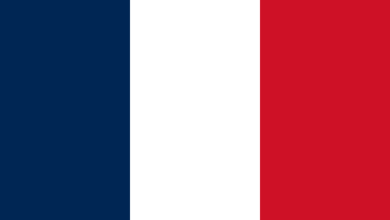
The National Flag of France
The French national flag, also known as the Tricolour, consists of three vertical bands of blue, white, and red. Its design was adopted following the French Revolution, influenced by the red-white-blue flag of the Netherlands. Although not the first tricolour, it became highly influential in history, symbolizing opposition to autocratic and clericalist regimes. Initially, during the French Revolution, the colours were combined in a cockade, with blue and red representing…
-
Botswana
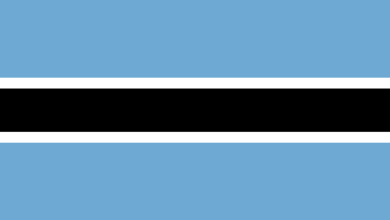
The National Flag of Botswana
The national flag of Botswana, known as “folaga ya Botswana” in Setswana, features a sky blue field intersected horizontally at the centre by a black stripe bordered with a thin white line. Adopted in 1966 to replace the Union Jack, it has represented the Republic of Botswana since gaining independence that year. Notably, it stands out among African flags for not incorporating the colours of the Pan-Africanist movement or the…
-
Senegal
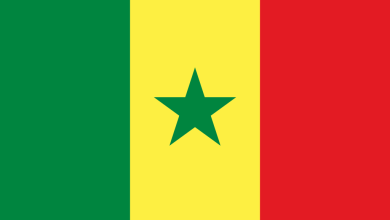
The National Flag of Senegal
The National Flag of Senegal or Senegalese flag, known as the drapeau du Sénégal in French, is a tricolour featuring three vertical bands in green, yellow, and red, with a five-pointed green star positioned at the centre. This flag was adopted in 1960, replacing the flag of the Mali Federation, and has remained the national flag of the Republic of Senegal since gaining independence in the same year. The current…
-
Thailand
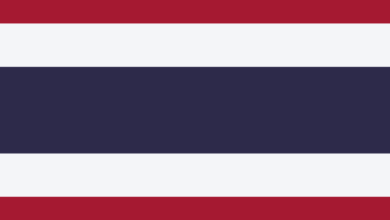
The National Flag of Thailand
The Thai flag, also known as the tricolour flag, features five horizontal stripes: red, white, blue, white, and red. The central blue stripe is twice as wide as the others. It was officially adopted on September 28, 1917, by a royal decree issued by Rama VI. Since 2016, this date has been celebrated as a national day of importance in Thailand, dedicated to honouring the flag. The colours of the…
-
Nepal
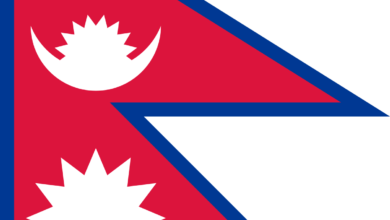
The National Flag of Nepal
The national flag of Nepal stands out as the world’s sole national flag not confined to a quadrilateral shape. It is a fusion of two single pennons, with crimson red representing the rhododendron, Nepal’s national flower, and a symbol of victory in conflict. The blue border signifies peace. Initially, the flag featured emblems—the sun and crescent moon—with human faces until 1962, when they were modernized. These faces persisted on the…
-
Armenia
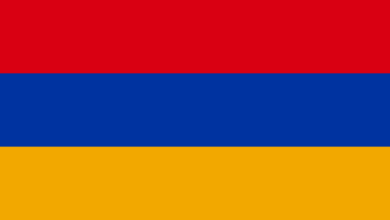
The Flag of Armenia
The law “On the State Flag of the Republic of Armenia” was adopted on August 24, 1990, by the Supreme Soviet of the Republic of Armenia. Following the constitutional reform of November 27, 2005, a new RA law on the National Flag of the Republic of Armenia was adopted on June 15, 2006. The national flag of the Republic of Armenia is a national emblem of the Republic of Armenia.…
-
Republic of Congo
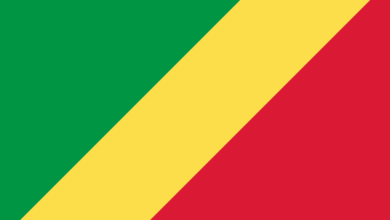
The National Flag of the Republic of the Congo
The national flag of the Republic of the Congo, known as the “drapeau de la république du Congo” in French, features a yellow diagonal band that divides the flag diagonally from the lower hoist-side corner. The upper triangle is green, while the lower triangle is red. This design was adopted in 1959, replacing the French Tricolour, and served as the flag of the Republic of the Congo until 1970. At…
-
Nigeria
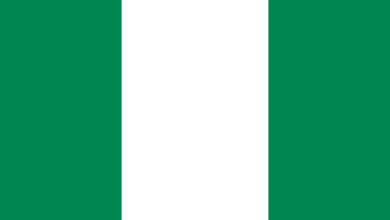
The National Flag of Nigeria
The Nigerian flag, designed by Michael Taiwo Akinkunmi, was officially adopted at midnight on October 1, 1960, signifying the nation’s independence. Akinkunmi’s design emerged victorious from a nationwide open contest organized by the government, where over three thousand entries were submitted. The flag features a vertical bicolour design of green and white. The green symbolizes agriculture, while the white represents peace and unity. In a ceremonial event, Lieutenant David Ejoor…
-
Algeria
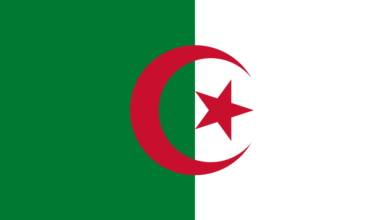
The National Flag of Algeria
The national flag of Algeria is comprised of two vertical bars, green and white, of equal width. Positioned at the centre is a red star and crescent, symbolizing Islam as the predominant faith of the nation. This flag was officially adopted on July 3, 1962, marking Algeria’s independence. The Algerian government utilised a comparable version in exile from 1958 to 1962. In heraldic terms, the Western description is “per pale…